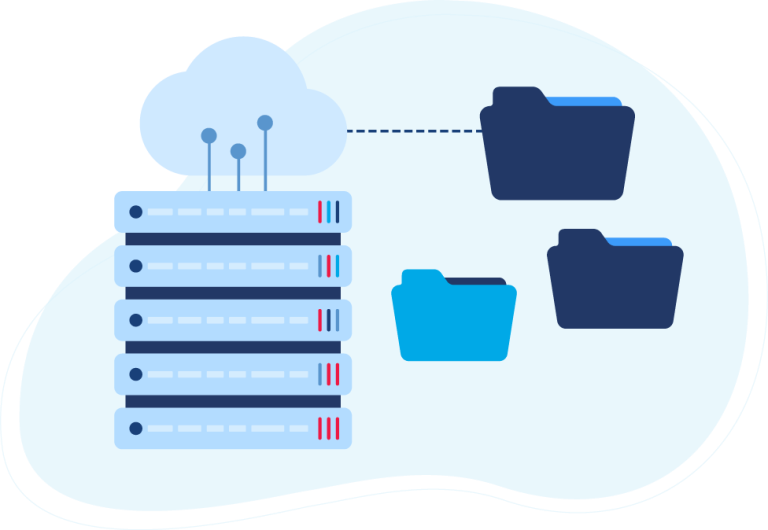We can agree that Data is a key element to inform business decisions. But how exactly is data processed? Batch-based data processing and real-time data processing are the two main ways to process information. However, the way integration processes data is more complex. Let’s dive in.
Get a well-rounded base before reading the next concepts with our blog discussing data integration. It contains an overview of the five different approaches to data integration. After all, when it comes to data processing, there are many ways to do it.
So, let’s take a look at real-time and batch-based data processing. Overall, it’s important to remember that one is not better than the other but rather it is based on your business’ needs and strategic goals.
What is Batch-Based Data Processing?
Real-time data integration is the idea of processing information the moment it’s obtained. In contrast, batch data-based integration involves storing all the data received until a certain amount is collected and then processed as a batch. In order to explain the concept of batch-based processing, I want to emphasize the following two key components. Batch processing in data integration means:
- This data process is scheduled at a specific time.
- Processing a sufficient amount of data.
This means that when data is processed as a batch, data will be collected and organized into one transaction file. This transaction file (source) is then stored until enough data has been collected, at which point the master file (target, like a central database) is updated via data integration at scheduled periods of time. So, data is not only collected together but also processed together.
Batch Data Processing Examples
Real-life examples make it easier to comprehend this concept. Some segments of your day to day life like the following are organized through a batch-based system:
- Electric bill: Oh yes, the good old hydro bill is an example of a batch-based system for data processing! Your electrical consumption data is collected during a set period of time before being processed as a batch in the form of your bill.
- Credit Card Transaction: Your credit card transactions are a slightly different example of batch-based processing; transactions and payments take time to be posted and aren’t reflected until a later date.

What is Real-Time Data Processing?
Real-time data processing is literally what it sounds, integrating data in real-time. But, the concept of “real-time” is worth discussing since processing and moving data obviously isn’t immediate. Just like there are two key components to highlight the nuances of batch-based processing as an approach to data integration and your data’s movement strategy, there are two tricks for real-time:
- Real-time data processing is immediate and constantly up-to-date
- Real-time integration is carried out at the time of the event.
With real-time processing, also known as online transaction processing, as soon as the transaction takes place, the master file is updated at the same time. This means it is mirroring a constantly updating cycle of information. With real-time processing, immediate data integration is required so that the information is updated ASAP.
Real-Time Data Processing Examples
When you book a flight and select your seat as a part of the process of buying your ticket, real time data movement happens to ensure your spot is not double booked.
- Reservation systems: When you book that five-star, all-inclusive vacation or a table at that little Italian restaurant, the master booking database is updated immediately so that no one else can book your spot.
- Point of Sale Terminals: As soon as you swipe, tap, or input your pin at a POS terminal, the funds are automatically collected from your account. Similarly, when you receive a refund, the funds will be reflected back into your respective banking account immediately.
Advantages and Disadvantages of Each Approach
Batch-Based Data Integration
| Advantages | Disadvantages |
| Considerable amounts of data are processed at a scheduled time via a single process. This promotes efficiency as it avoids having to process data every time it is received. | Since the information is processed at a scheduled time, the data takes time to be processed. Delays in updating master databases can sometimes occur |
| It can be carried out at any time, even during a computer system is idle. This allows operators to prioritize the timing of batches easily. | The information can be outdated. Depending on the circumstances, this would be detrimental in a situation where data really should be updated immediately. AKA when you’re booking seats on a plane. It’s important that you select the right data movement strategy for your business! |
When Should You Consider Batch Data Processing?
The use of batch-based processing was initially the preferred approach for many companies. Especially the ones using older technologies that didn’t have the resources to run real-time processing and wanted to save network bandwidth. Although the use of this approach has been declining, many companies like Amazon are still using a form of batch-based processing to move data.
Batch-based processing is most commonly used by companies that have a high volume of orders. For example, if you have 1,000 orders per day, the system won’t handle it if it is processing each order in real-time. Especially if the system does not have the resources to support the volume of orders. Using a batch-based system, allows the orders to be processed as a queue rather than all at once which would clog the system.
Similarly, if you have a high volume of SKUs, it is better to run them as a batch to avoid system throttles. Running these SKUs as a batch would allow the system to allocate resources for when it is time to run the SKU. Consequently, preventing the system from getting backed up. When these SKUs can be updated, running a batch-based system will allow these updates to run on the back-end rather than in real-time. Overall, batch-based processing promotes efficiency and ensures that the system does not get clogged with orders or SKU.
Advantages and Disadvantages of Each Approach
Real-Time Data Integration
| Advantages | Disadvantages |
| The main advantage of online transaction processing is that the data is processed immediately. This is beneficial as the information is updated ASAP which is ideal when you are dealing with reservations. | It is costly to have personnel that immediately processes incoming data without further data integration and automation. This is key to ensure data is where and how it needs to be on the other end of the integration. |
| Not only does online processing promote speed but it also ensures that the information is up-to-date and not delayed. |
When Should You Consider A Real-Time Data Integration System?
Real-time data movement focuses on the speed at which data is processed and ensures that information is up-to-date. Speed has become critical to businesses especially if you want to have an edge over your competitors. This data movement approach is often used by businesses that schedule shipping. Since they need to have up-to-date information on inventory, real-time processing works for these businesses.
For example, if you are running a home decor business, you need to know when you are running low or have completely run out of inventory. This will prevent that customers order products that are out of stock. This information needs to be up-to-date to prevent order and shipping delays and to promote a positive customer experience. Using real-time processing can give you an edge over your competitors, as your customers are given actual real-time updates on their orders rather than outdated information.

Batch Or Real-Time?: The Need for Data Processing in Business
So, let’s discuss real time vs. batch integration. To do so, we should go back to our original question, is data integration a full stop in real-time or is it more complex? Data integration is NOT always done in real-time. Plus your options for configuring how data moves as a part of your data integration strategy are a lot more complex.
Choosing how your data is processed involves understanding your business’ needs and determining which approach—batched or real-time— fits best with your business. Again, this decision depends on your business, strategy, data transaction volume. Plus, the kind of customer experience you want to promote. Ultimately, there are several reasons for considering both data movement systems. The bottom line is…this choice renders on your business strategy and needs.
 D365 Business Central
D365 Business Central Netsuite
Netsuite


